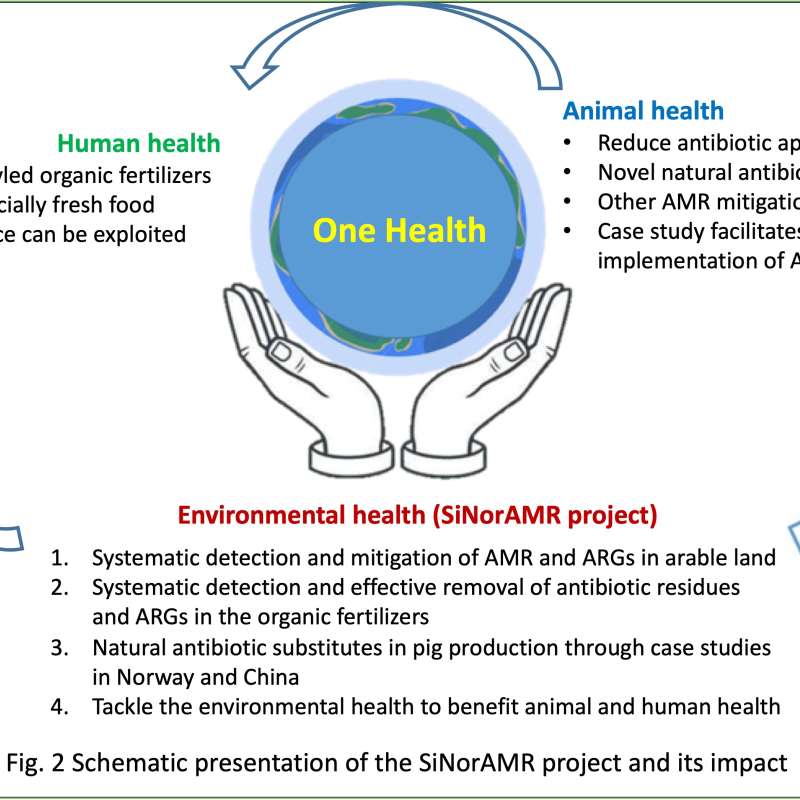Anders Aas
Research Scientist
Authors
Christophe Moni Eva Farkas Claire Coutris Hanna Marika Silvennoinen Anders Aas Marit Almvik Liang Wang Kathinka Lang Xingang Liu Marianne StenrødAbstract
Biochar and pesticides are likely to be increasingly used in combination in agricultural soils, yet their combined effects on climate change mitigation remain unexplored. This study presents an 8-month incubation experiment with different soil types (silt loam and sandy loam), biochars (corncob and corn stem), and pesticides (with and without a pesticide mixture), during which CO2 production from soil organic matter (SOM) and biochar mineralisation was monitored using isotopic methods. A comprehensive modelling approach, describing all mineralisation results over the entire incubation with a reduced set of parameters, was employed to isolate the effects of biochar, pesticides, and their interactions across soil types and carbon pools, and captured the dynamic effect of biochar on SOM mineralisation. Over 99.5% of biochars remained inert after 8 months, confirming the role of biochar as a carbon sequestration technology. Biochar addition showed higher SOM stabilisation potential in soil with high clay content compared to soil with low clay content. This suggests that biochar amendment should be considered carefully in clay-depleted soils, as it could result in a loss of native SOM. Corn stem biochar, characterised by high surface area and low C/N ratio, demonstrated higher SOM stabilisation potential than corncob biochar with low surface area and high C/N ratio. Pesticide application reduced SOM mineralisation by 10% regardless of soil and biochar types. Finally, the interaction between corncob biochar and pesticides further reduced SOM mineralisation by 5%, while no interactive effect was observed with corn stem biochar. These findings highlight the importance of considering biochar-pesticide interactions when evaluating the impact of biochar amendments on native SOM stability.
Abstract
No abstract has been registered
Abstract
Since the 1950s, the use of plastics in agriculture has helped solving many challenges related to food production, while its persistence and mismanagement has led to the plastic pollution we face today. Soils are no exception and concentrations of polyethylene mulch debris up to 380 kg/ha have been reported in Chinese agricultural soils. A variety of biodegradable plastic products have thus been developed and marketed, with the aim to solve plastic pollution through complete degradation after use. But the environmental conditions for rapid and complete degradation are not always fulfilled, and the risk that biodegradable plastics could also contribute to plastic pollution must be evaluated. In this presentation, we want to share the knowledge gained through research projects on biodegradable plastics in agricultural soil, where we both studied the degradation of biodegradable mulch under Nordic soil conditions, and the fate of other biodegradable plastics in soil amendments such as compost and biogas digestate. A two-year field experiment with biodegradable mulch (PBAT-starch and PBAT-PLA) buried in soil in mesh bags showed that also under colder climatic conditions does degradation occur, involving fragmentation already after 2 months, but that complete degradation may take 3 to 9 years, depending on soil temperature and soil organic matter content (both correlate positively with degradation rate). Accumulation is therefore likely to happen when biodegradable mulch is repeatedly used every year. A full-scale experiment with compostable plastic cups (PLA) at an industrial composting plant, where we followed their fate and conducted metagenomic analysis over 13 weeks, demonstrated the major role played by fungi for a successful degradation of PLA. However, the successful management of biodegradable plastic products largely depends on existing waste management infrastructure. Most biodegradable plastic bags, labelled as compostable and used for food waste collection do not end up in industrial composting plants in Norway, but in biogas production plants. Here, we showed that these plastic bags (Mater-Bi®) are only marginally degraded (maximum 21-33 % mass loss) during biogas production, and likely to end up in biogas digestate and then in agricultural soils, unless digestate is treated to remove plastic residues.

